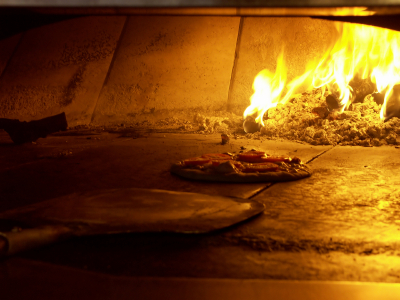A new study about antioxidant content in pizza crust makes me realize that I was in the wrong area of chemistry. Instead of wondering about my relative carcinogen exposure, chemical burns and taking antibiotics for that one bacterial infection that made my hand swell to twice its normal size, I could have been baking pizza. Like all good science, it requires repetition, tweaking the dough, altering the temperature, extending the reaction (cooking) time. Then, there’s the heavy duty chemical analysis part, but, wow, a reaction product that you can eat? Sounds good to me.

Seriously, though, what the researchers found that they could produce crusts with a more powerful punch of antioxidants. First of all, they were looking at whole wheat crusts, so traditionalists should bear that in mind. The bran size didn’t make a difference, but if they let the dough ferment (think sourdough, not spoilage) for up to 48 hours, they did see an increase in one of the measures of radical scavenging. Increasing the cooking temperature from 400 to 550 degrees Fahrenheit, or doubling the cooking time, increased the overall antioxidant capacity. That higher temperature is well within wood-fired oven temperatures (~600 degrees), but I’m wondering whether the even higher temperatures of a coal fired oven (800 degrees or more) might make a difference. Yes, one of my hobbies is trying out all kinds of NYC pizza. . . .
Another interesting footnote on this type of research is the measure of antioxidant capacity. The ORAC (oxygen radical absorbing capacity) is based on throwing a fluorescent dye in with oxygen radicals and the food you’re trying to test. The test measures how much antioxidants in the food protect the dye from the attacking radicals. There’s some controversy in the field about how accurately this test measures the functional antioxidant content in food. But the consensus: a wide variety of antioxidants in the diet is good for sponging up those free radicals.
I wouldn’t take this paper as an endorsement of pizza as a health food, though. The take home message seems to be more that whole wheat is good for you, and here are some ways to jack up the antioxidant content. I still remember an American Chemical Society session a few years ago that was talking about how most Americans got their antioxidants from coffee. The media message the next day was “wow, coffee is good for you!” The message I got sitting in that room was far more somber– Americans are eating so few fruits and vegetables that our primary source of antioxidants is coffee.
So, it’s all a matter of context– food processing can change the nutritional content, and here are some ways that might improve the antioxidant content in pizza crusts. But, in reality, while tweaking the crust can help, some veggie toppings and a nice mixed salad might be more what the doctor ordered.

This is actually really interesting, esp. b/c I just read an article about how letting the dough ferment increases its “crispness.” Better taste AND better nutrition? Count me in!